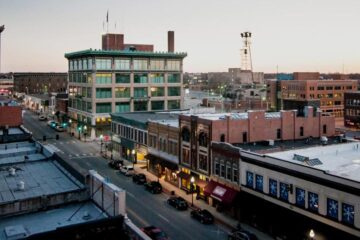- Residential
- Lifestyle Packages
-
-
Connected Family
Home Office
-
Outdoor Lifestyle
Fundamentals
-
-
-
Gaming Necessities
CTA
Or build your custom package
Build Your Package
-
-
- Locations
- Arizona
- Colorado
- Missouri
- Nebraska
-
- Live in an Apartment?
- ALLO for Property Managers
- Products
- Explore Fiber
- Lifestyle Packages
- Business
-
- Help
-
-
Streaming Class callout
Come to an ALLO Streaming Class!
We're offering free classes across many of our communities to help you learn what streaming is, how to get started, what equipment you need, and how to find the right streaming services for you.
Learn MoreExplore Fiber link
-
- About
-
-
Featured job
ALLO has an immediate opening for:
Residential Sales Associate
Grand Island, Kearney, or Hastings
Outgoing, energetic person who loves meeting new people while working in dynamic environments and holding a non-traditional work schedule. If you’re ready to break free from the constraints of a traditional desk job, ALLO Fiber has the perfect opportunity for you to join our Residential Sales Team doing Door-to-Door sales!
Apply Today
-
FTTN (Fiber to the Node)
A fiber-optic connection that extends to a nearby hub, with copper wiring completing the last segment.What is FTTN?
FTTN, or Fiber to the Node, is a hybrid fiber delivery method where fiber reaches a neighborhood node or street cabinet, and the remaining connection to homes or buildings is completed using existing copper phone lines. It’s commonly used by ISPs to offer faster internet without full fiber upgrades.
FTTN vs FTTH vs FTTB
| Feature | FTTN | FTTH | FTTB |
|---|---|---|---|
| Download vs Upload Speed | Unbalanced (e.g. 300/10) | Equal (e.g. 300/300 | |
| Fiber Reaches | Neighborhood node | Direct to home | Direct to commercial building |
| Final Leg | Copper (DSL) | Fiber | Ethernet or coax |
| Performance | Moderate | High | High |
| Commonly Used For | Residential areas (legacy) | Modern residential installs | Multi-tenant business spaces |
Performance and Limitations
FTTN can provide faster speeds than DSL, but it has significant limitations:
- Speed and reliability decrease the farther you are from the node
- Upload speeds are often much lower than download
- Not suitable for homes with high bandwidth demands or smart device ecosystems
- Higher latency than full fiber connections
Where It’s Commonly Used
FTTN is still common in areas where ISPs have not yet invested in full fiber rollouts. It’s often used in suburban or rural neighborhoods where upgrading every home to fiber would be too costly or time-consuming.
FAQs
How fast is FTTN internet?
Speeds vary but typically range from 25 Mbps to 100 Mbps download. Upload speeds are usually much lower due to copper line limitations.
Is FTTN considered fiber internet?
Technically yes — but only partially. It includes fiber to a nearby node, but the last leg uses copper, which limits performance compared to full fiber (FTTH)
Can I upgrade from FTTN to FTTH?
In some areas, yes — if your ISP offers fiber build-outs. You may need new wiring and installation to bring fiber directly to your home.
What are the downsides of FTTN?
Slower upload speeds, higher latency, and inconsistent performance depending on your distance from the node.










